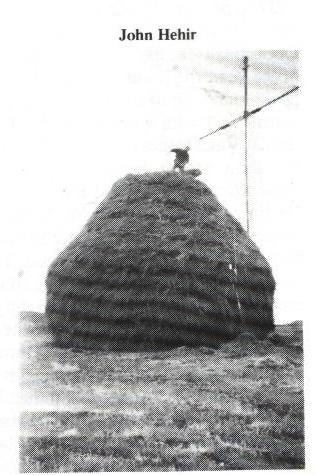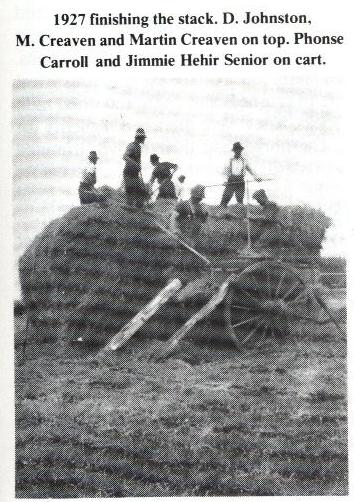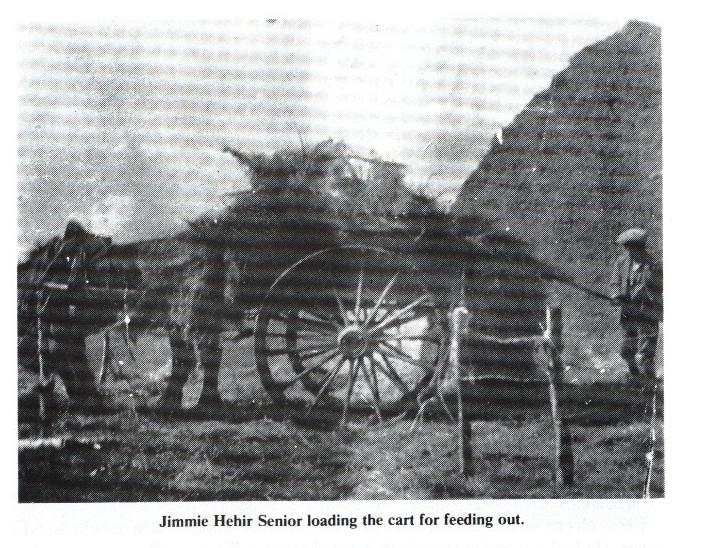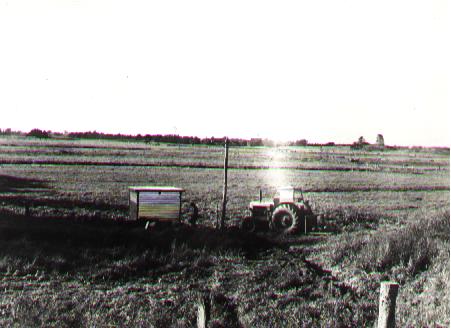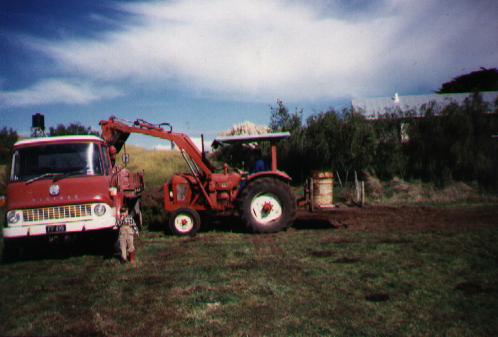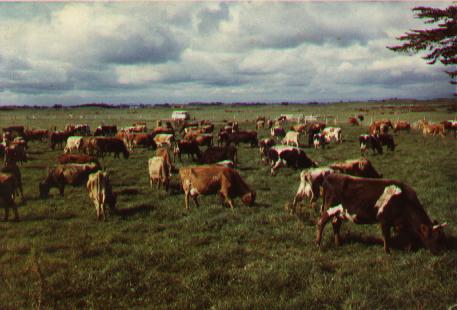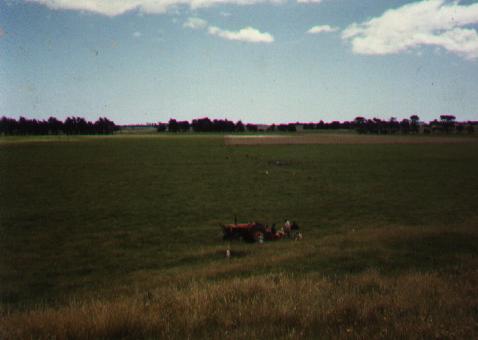|
St Peter's College Erinwood Farm |
|
Making hayHere is how hay was made on the farm up until the 40's.
On Erinwood farm the Hehir's had help from Kirk Gray and his horses, the Prebbles, Mephams, Algars, Hancocks, Johnstons, Hills, Sextons, Carrolls and Creaven families.
The hay was then taken from the stack to feed the animals in the winter.
With mechanisation coming into widespread use there have been big changes in the way hay is made. The advent of tractors and hay balers meant that more hay could be made by fewer people.
The first cabbed tractor on the way to the hay paddock.
This was a boon during the war years when labour was short. Christie and Jimmy would make extra money during the 40's & 50's by hay contracting.
Kippy loading up the truck with bales on the front-end loader. This job was often done in a race against oncoming rain, if the bales got wet they could have to be cut open, tedded, dried, raked and baled again.
Cows eating hay The latest evolution of haymaking on the farm was been the purchase of a round baler in 1984 by Tim and Chris.
The paddock ready to be cut for hay-making They are on their 4th baler now with the last one able to make baleage too. This has also seen the purchase of a bale wrapper to further enable them to make the best use of all available surplus feed. |
|
